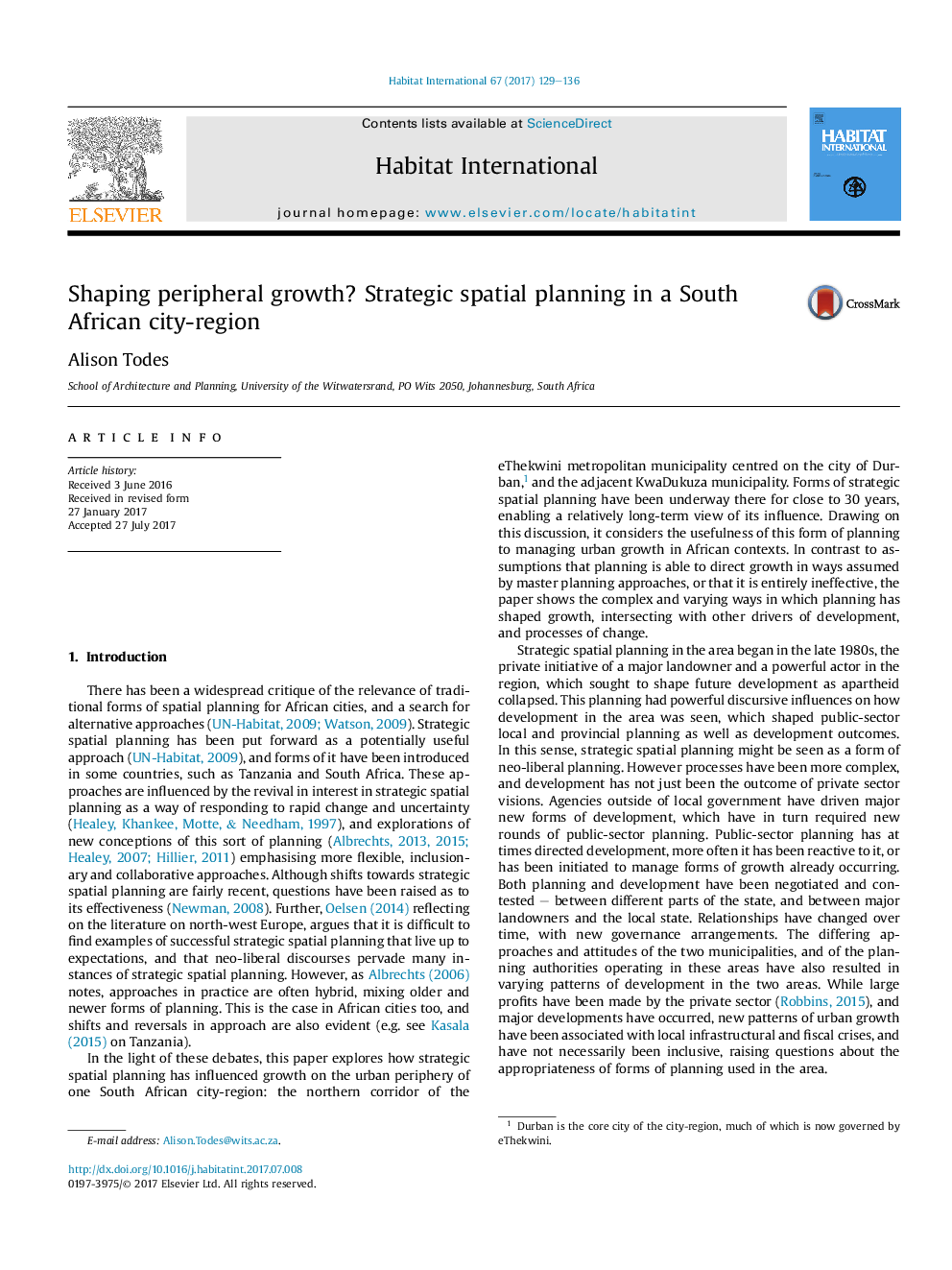| Article ID | Journal | Published Year | Pages | File Type |
|---|---|---|---|---|
| 5114585 | Habitat International | 2017 | 8 Pages |
Abstract
There has been a widespread critique of the relevance of traditional forms of spatial planning for African cities, and a search for alternative approaches, including strategic spatial planning. However there are debates over whether it is effective and appropriate. This paper explores how strategic spatial planning has influenced growth on the urban periphery of one South African city-region: the northern corridor of the eThekwini (Durban) metropolitan municipality, and the adjacent KwaDukuza municipality. Forms of strategic spatial planning have been underway there for close to 30 years, enabling a relatively long-term view of its influence. In contrast to assumptions that planning is able to direct growth in ways assumed by master planning, or that it is entirely ineffective, the paper shows the complex and varying ways in which planning has shaped growth, intersecting with other drivers of development, and processes of change.
Related Topics
Social Sciences and Humanities
Social Sciences
Development
Authors
Alison Todes,
